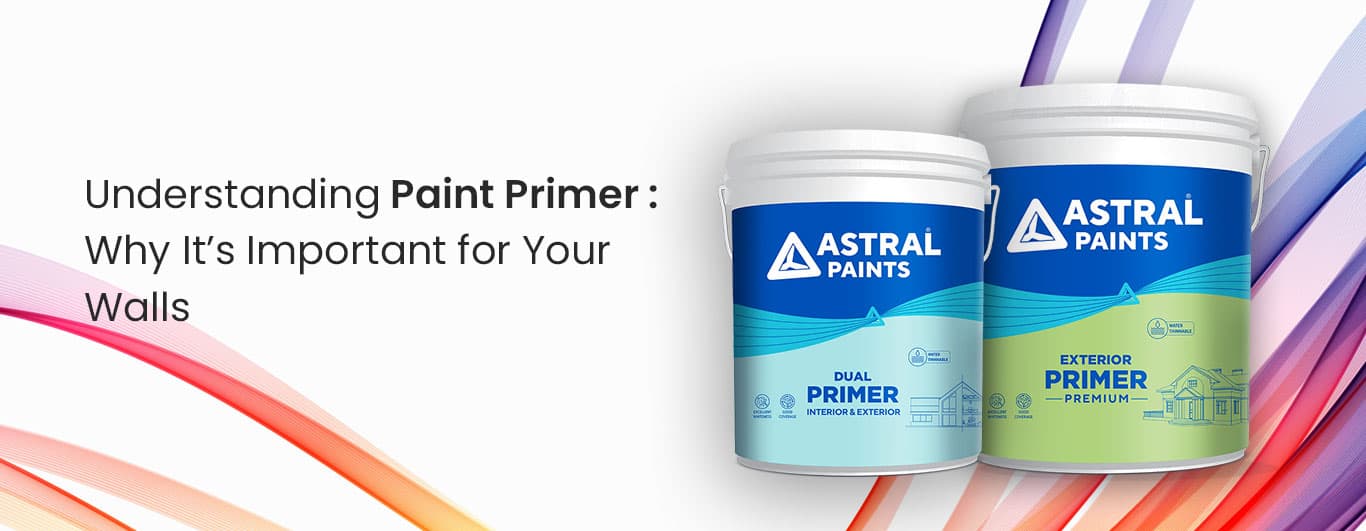
Understanding Paint Primer: Why It’s Important for Your Walls
When it comes to painting your walls, you may be tempted to apply colour directly over the previous coat. Simple as it may sound, it isn’t the correct approach. Using a primer is an important process that not only gives your paint job a professional and appealing look but also increases the life of the applied coat.
Primer helps create a fundamental base allowing the applied paint to set effectively and also offers several other durability and maintenance benefits. This guide highlights the importance of using primer and its overall application in diverse interior segments.
What is Paint Primer?
Paint primer is a type of coating applied on the surface that is scheduled to be painted. Its main function is to ready the surface [by creating a smooth base] and enhance the bonding between the surface and paint. Primers are available in different types such as water-based, oil-based and shellac-based. Homeowners must select the correct primer type depending on the scale, conditions, and final project objective.
Why is Primer Important?
Primer offers several key benefits that make it an essential step in most painting projects:
1. Improved Paint Adhesion
A primer is a coat that gives a better surface for the paint to stick on, resulting in a premium finish. This is particularly useful for porous surfaces such as drywall, bare wood, or concrete as these surfaces cannot uniformly absorb the paint.
2. Enhanced Durability
Primer helps the paint stick to the surface, ensuring the paint does not peel, chip, or crack in the long run. Heavy traffic areas of the house that are susceptible to moisture like the kitchen and bathroom, significantly benefit from primer application.
3. Stain Blocking
Your walls are vulnerable to stains from water damage, smoke, or tannin in the wood that seeps through the paint to spoil the finish. The primer works as a shield and does not allow the stains to appear on the surface of the walls.
4. Even Color Coverage
When upgrading the paint of your house, primers play a vital role in elevating the colour transition. Switching from darker shades to neutral colours becomes seamless with the effective use and application of primer, allowing you to save time and money in the long run.
5.Surface Sealing
For new drywall or porous surfaces, primer acts as a barrier that prevents paint blotching and gives a smooth and even finish. Be sure to choose Astral Paint’s premium primer to get the best results.
When Should You Use Primer?
While primer is not always necessary, there are certain scenarios where it is highly recommended:
- Painting Over Bare Surfaces: Whether you are working with drywall, wood, or even metal, primer is an important tool when painting.
- Changing Colors Dramatically: If you are repainting your walls from a dark colour to a lighter one or vice versa, then primer ensures that you apply an even coat throughout.
- Dealing with Stains or Damage: For walls that have watermarks, smoke damage, or other blemishes, a stain-blocking primer is a must.
- Painting Glossy Surfaces: If your surface has a shiny or slick finish, primer helps the paint adhere properly, reducing the risk of peeling.
- Painting High-Moisture Areas: Bathrooms, kitchens, and basements should be enhanced with moisture-resistant primers to prevent the development of mould and mildew.
Different Types of Primer
The various types of primers are developed to suit different surfaces and requirements. Here’s an overview:
- Latex Primer: This type of primer is suitable for drywall and softwood materials due to its water-base and fast-drying properties.
- Oil-Based Primer: This type of primer is suitable for wooden, metallic, and other stainable surfaces. Oil-based primers provide good adhesion and stain-blocking properties. However, they take longer to dry and also possess a strong smell.
- Shellac-Based Primer: Shellac primer is one of the best primers used in sealing water, smoke, and tannin stains. It is efficient on wooden and other hard-to-clean surfaces.
The Application Tips for Primer
- Prepare the Surface: Before applying the primer, it is recommended to clean and dry the surface. There should be no dirt, grease, or chipped paint. If there are any gaps or holes, then they should be filled with the right materials and the surface should be sanded.
- Choose the Right Tools: It is recommended to use high-quality brushes or rollers for primer application [depending on the type of primer being used]. For large surfaces, a roller is more efficient and will provide an even application.
- Apply a Thin and Even Coat: It is recommended to apply the primer on the surface in thin and uniform layers.
- Test Before Painting: After the primer has dried, one should check the surface for uneven areas. Ensure that the surface is smooth to the touch and looks even.
Final Overview
Applying primer is the first step to a flawless, long-lasting paint job. Choosing Astral Paint’s Dual Primer influences better adhesion and elevates durability, as a premium finish is achieved. Though it may seem like an additional step, primer will save you time and money in the long run.
The right primer can make all the difference, whether you’re working with bare surfaces, covering stains, or blending between colours. Connect with the Astral Paints team to purchase top-quality primer at affordable rates.